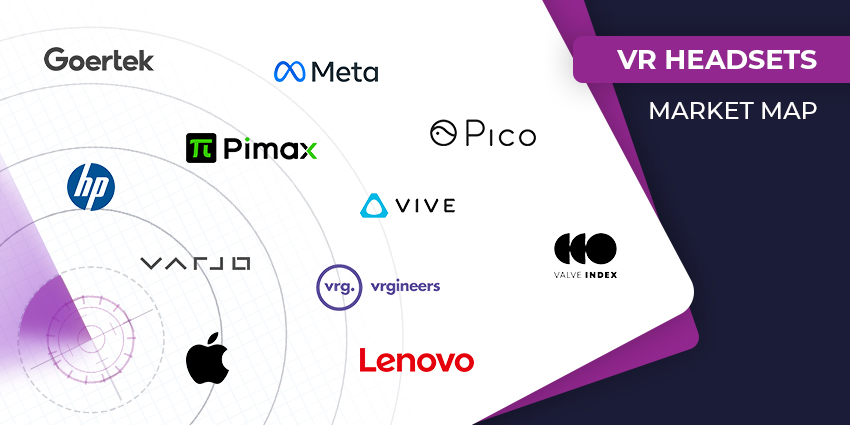Truly immersive experiences in Extended Reality rely on the ability to engage multiple senses in an environment which looks, feels, and sounds similar to real-life.
During the early years of XR development, many innovators focused heavily on the quality of the visuals produced for digital interactions. However, while what we can see in AR, MR, and VR is important, it’s not the only factor. We also need access to a powerful audio experience, so we can pick up sound-based cues, and navigate new environments.
Spatial audio is the technology promising to transform the way we engage with sounds in virtual, augmented, and mixed reality settings. Capable of bringing direction and positioning to sound cues, this solution could significantly improve our sense of immersion.
The question for today’s companies investing in XR technology, is how do they choose the right vendor for their spatial audio needs?
Step 1: Plan a Comprehensive XR Strategy
Spatial sound is just one component in the journey towards an immersive extended reality experience. To take full advantage of this new technology, business leaders need to ensure they have a comprehensive plan in place for how they’ll leverage immersive tools.
The right XR strategy will guide business buyers towards vendors capable of offering the right blend of technology for their specific goals. Some of the points to consider when developing a plan include:
- XR Environment: First, business leaders need to determine what type of XR they’re going to explore. Virtual Reality tools can provide phenomenal digital environments where users can collaborate, explore, create, and communicate. AR and MR solutions are excellent for combining the real world with digital content. Each environment has its own challenges to consider for spatial audio, such as how to navigate the combination of real-world and digital sounds in a mixed reality space.
- XR Goals: As extended reality technology has continued to evolve; companies and business leaders are discovering new opportunities within the space. The kind of spatial audio vendor an organisation chooses should be linked to their specific targets for XR. For instance, in a company offering XR training, the aim may be to help improve awareness and build specific instinctual skills among users, based on sound cues.
- Critical XR features: As mentioned above, spatial sound is only one element of a strong XR plan. Companies will also need to think about the other essential features crucial to achieving their goals. For instance, spatial sound is often best when combined with high-quality 360-degree visuals, enhanced by eye and motion-tracking sensors. It may even be possible to connect spatial sound with haptic feedback tools.
Step 2: Explore Hardware and Software Options
Notably, implementing spatial audio into any environment requires a combination of the right hardware and software. This means business leaders may need to consider two different vendors to make the most of their ecosystem.
Starting with hardware, it’s important to ensure any XR device used by the company has spatial audio technology built-in. This ensures the solution can deliver either binaural spatial audio through headphones, or object-based audio delivered by a series of speakers. Binaural solutions are generally the most effective option, as they allow for more movement and flexibility among users.
Many of the top headsets in the XR environment are already using spatial audio solutions to enhance the impact of their 360-degree visuals and other immersive features. However, for older or less advanced headsets, there may be the option to invest in additional accessories to bring new functionality to an existing purchase.
From a software perspective, its worth looking at the functionality of any apps available for business needs, and how they implement spatial audio solutions. Some applications are not equipped for positional audio. However, as this technology grows more popular, many leading innovators are releasing SDKs and developer environments with spatial audio tech included.
Business leaders will need to determine whether they want to use the software offered by an existing vendor with experience in spatial audio, or whether they’d prefer to build their own XR environment from scratch using a tool like Unity.
Step 3: Consider User Experience and Safety
When searching for the right vendor to implement an XR solution equipped with spatial audio, companies will need to think carefully about how they can deliver the best possible user experience. The best XR solutions are designed to encourage rapid adoption by providing a simple and user-friendly environment to for innovation.
Diving a little deeper into the SDKs and apps available for developers building spatial audio experiences can make it easier to determine how effective the UX environment is likely to be. For instance, it may be important to look for SDKs which allow for the differentiation between crucial sound and background noise in an app.
When considering hardware vendors, it’s worth thinking about how spatial audio is delivered to users. While speaker sets can be more immersive, they also place limitations on flexibility and movement for users. Alternatively, off-ear headsets included within a wearable XR device can be a lot more versatile and easier to use.
When implementing any new headset into the XR environment, it’s worth thinking about how comfortable the device will be for long-term use. Too many advanced features, from eye-tracking to high-fidelity visuals and spatial audio can sometimes place a significant cognitive load on users. At the same time, heavy and cumbersome headsets can cause fatigue with regular use.
Businesses investing in XR solutions will need to work with their vendor to ensure the experience available is comfortable, safe, and user-friendly.
Consider Future XR Needs Too
Finally, before investing in the solutions offered by any XR vendor, it’s important for business leaders to ensure they’re considering both their current and future needs. An open platform for software development will allow for the addition of new functionality and solutions as they emerge in a market. What’s more, a forward-thinking headset should reduce the need for additional investments in future.
Planning for XR implementation with a focus on both the current innovative tools available, like spatial audio, and the solutions yet to come should allow for a future-proof investment.







